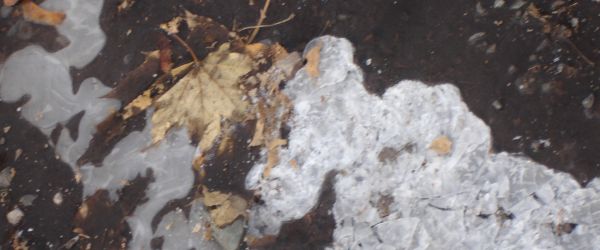Over the past week, a prolonged and unusually warm autumn has come to an end in western Montana. Snow is on the mountains, and has even made a brief appearance in the relatively sheltered valley where Missoula lies. Wind chills of ten to twenty degrees below zero are predicted as gusts of up to 35 miles per hour sweep the University of Montana campus. The arctic cold front responsible is, in the words of a local meteorologist, “not the coldest arctic front we’ve ever seen, but it’s one of the colder.”
Or in Buffalo terms, it’s what we call “winter”. Winter can be depressing, especially in northern latitudes where there is little sunlight. It can make travel difficult, prompting isolation. It can promote cabin fever.
It can also, for the naturalist, be wonderful.
The Missoulian has sealed its place in my heart by posting not one but two articles on the effects this weather pattern will have on local bird life. Last week they ran a photo and paragraph about the belated departure of the Western Meadowlark. And today… well, check it out for yourself: 8,000 Geese, Waterfowl Flock to the Lee Metcalf Refuge.
For the link-phobic, this article deals how several thousand Snow and Ross’s Geese, along with smaller numbers of Tundra and Trumpeter Swans, have descended on the Lee Metcalf National Wildlife Refuge in advance of the front. Unfortunately, being car-less I can’t get out to see this spectacle for myself, but many local birders have reported hearing the flocks pass over and hopefully I will at least get a taste of it in that way.
Both articles, and the phenomena they document, point to how contingent migration truly is. While zungeruhe is certainly a real thing, there are advantages to birds that fight the urge a bit when conditions on the ground are unusually good, those that only travel when they must and only as far as they have to. Migration is fraught with danger, and it’s energy intensive. If you can manage to overwinter a little closer to your breeding grounds than the competition, you may be able to get back earlier and in better condition. But if you misread the cues, you could find yourself trapped without a food supply. It’s long been known that open water will keep geese farther north, and debated whether feeder will encourage some passerines to stick around to a harmful degree. With the climate changing, we may be in for much larger experiments of this nature, and not all of them will work out.
But winter provokes enough blues without that, so let me switch to a happier topic. This season is especially exciting because for the first time, winter will bring birds to me in not one but two directions! It brings birds from the north, of course, the waterfowl mentioned above and also treats like Bohemian Waxwings and Evening Grosbeaks. It also tends to push high-elevation birds down the slopes, bringing species like Cassin’s Finch, Mountain Chickadee, and Gray-crowned Rosy-Finch closer to town. The way that elevation and latitude resemble one another is one of the environmental lessons that is easiest to learn when there is some serious elevation around.
The bears are mostly asleep. I’ve hung a feeder, and many of my neighbors have done the same. I have my coat and boots and a hat with ear-flaps and mittens with finger-flaps.
Bring it, winter.












I am seriously looking forward to your feeder-bird reports. There had better be finches!
Hurrah for feeders! My parents always get crazy amounts of visitors in the winter.
One of the sadder aspects of Heidelberg, and there are many, is that migration around here isn’t something obvious, as the species moving through are almost all the same ones as our residents, so one only notices an increase in numbers, and then a decrease again, that’s all.
Can’t wait for your stories, and remember that you promised pictures. And you need to find local birding folks with a car…
Your article was also very charming for me as a German: you wrote zungeruhe, which could be translated as tongue rest (zunge = tongue, ruhe = rest), while the phenomenon you meant (yes, I know you know and it was a typo) is zugunruhe (zug = migration, unruhe = restlessness).
It is furthermore very interesting that birders and ornithologists use the term for two almost entirely different phenomena, but that may be worth a blogpost, not a comment.
@ Corey: I think I am going to have to get a seed feeder, which with all the squirrels hanging around taunting me might be a challenge.
@Duncan: My parents got me into the whole feeder-watching thing, too. They always have interesting visitors.
@Jochen: Unfortunately, as you can see, me and my camera are not a particularly winning team. But I will do my best! RE: zugunruhe, that’s what I get for trusting an American newspaper editor.
General update: I got my first feeder bird this morning! Downy Woodpecker, male, handsome fellow but sort of nervous. The snow is now falling in a fairly serious manner (though it’s no lake effect) and there are reports of Evening Grosbeaks in Bozeman, which is south and east of here.
We’ve been lucky in SLC, UT with our mild weather. However, we’re suppose to have a major drop in temperature soon – just in time for Thanksgiving! Our birds are also coming down from the mountains. I look forward to hearing your feeder reports.
Carrie – you should try the Squirrel Buster Plus feeder. This will help you with your squirrel problem.
I, for one, appreciate your artistic approach to photography.